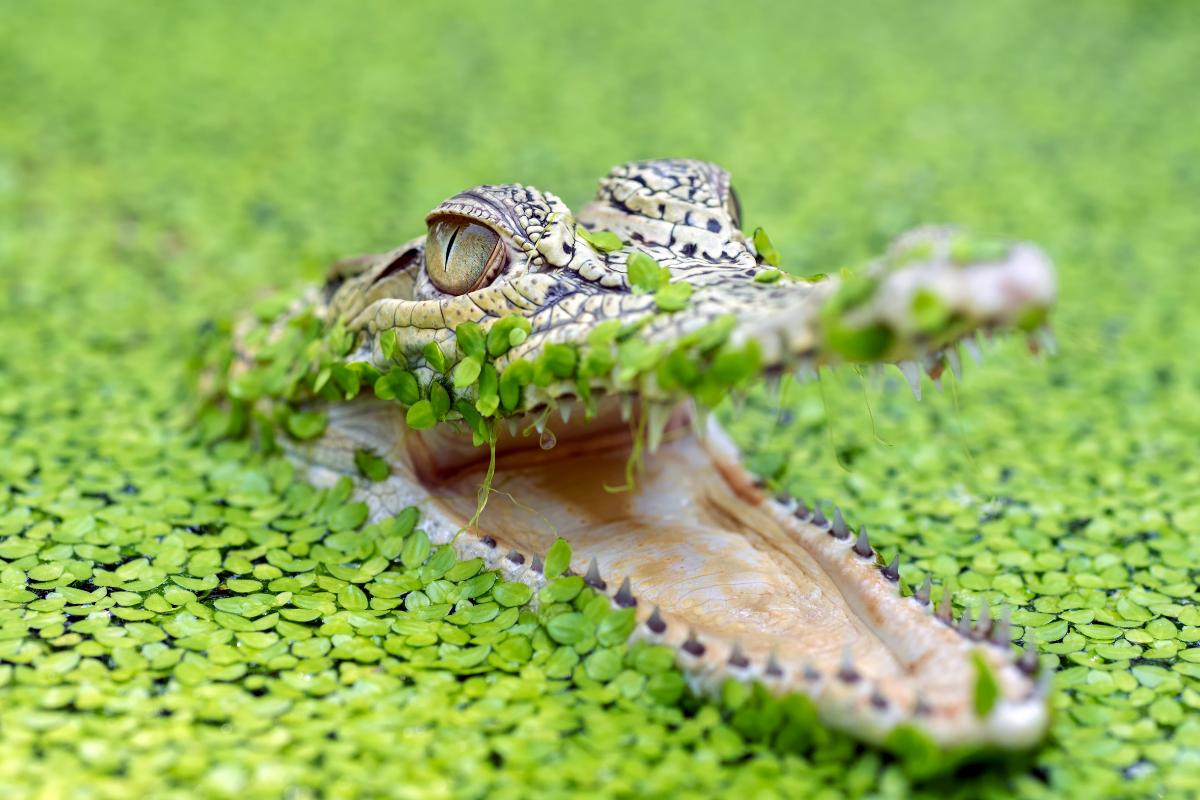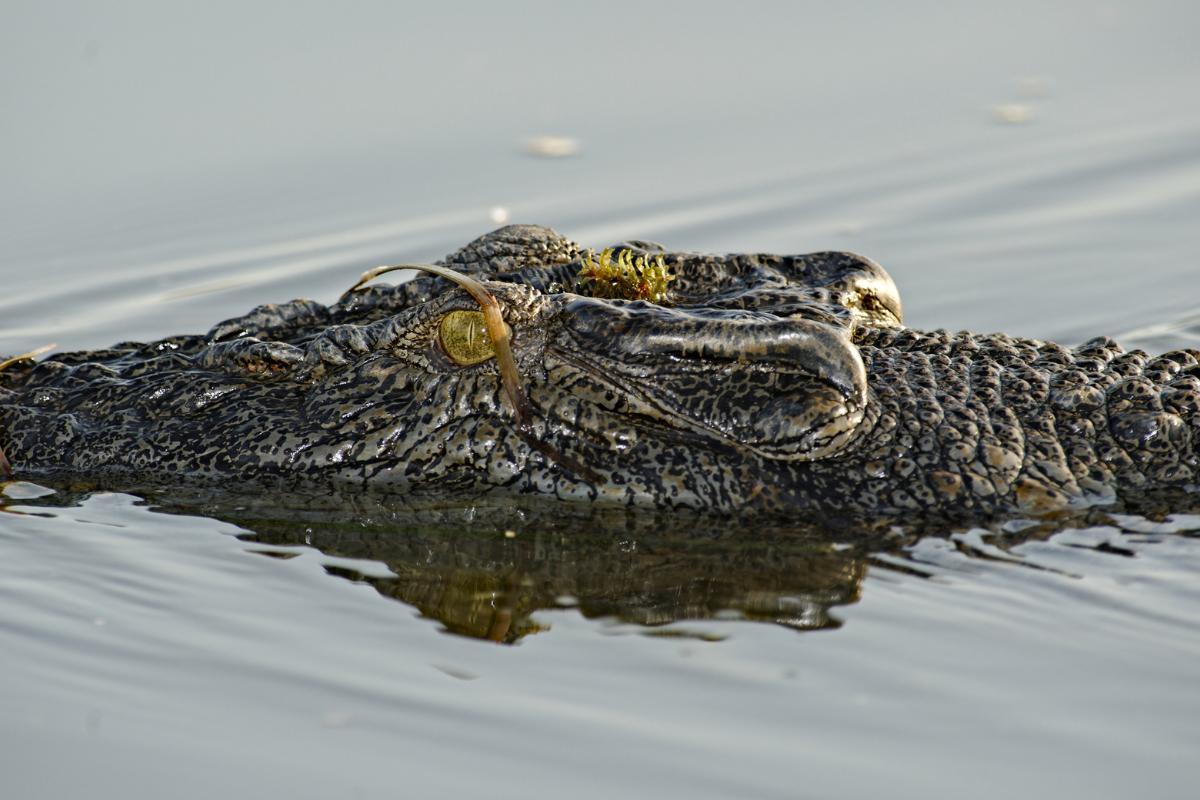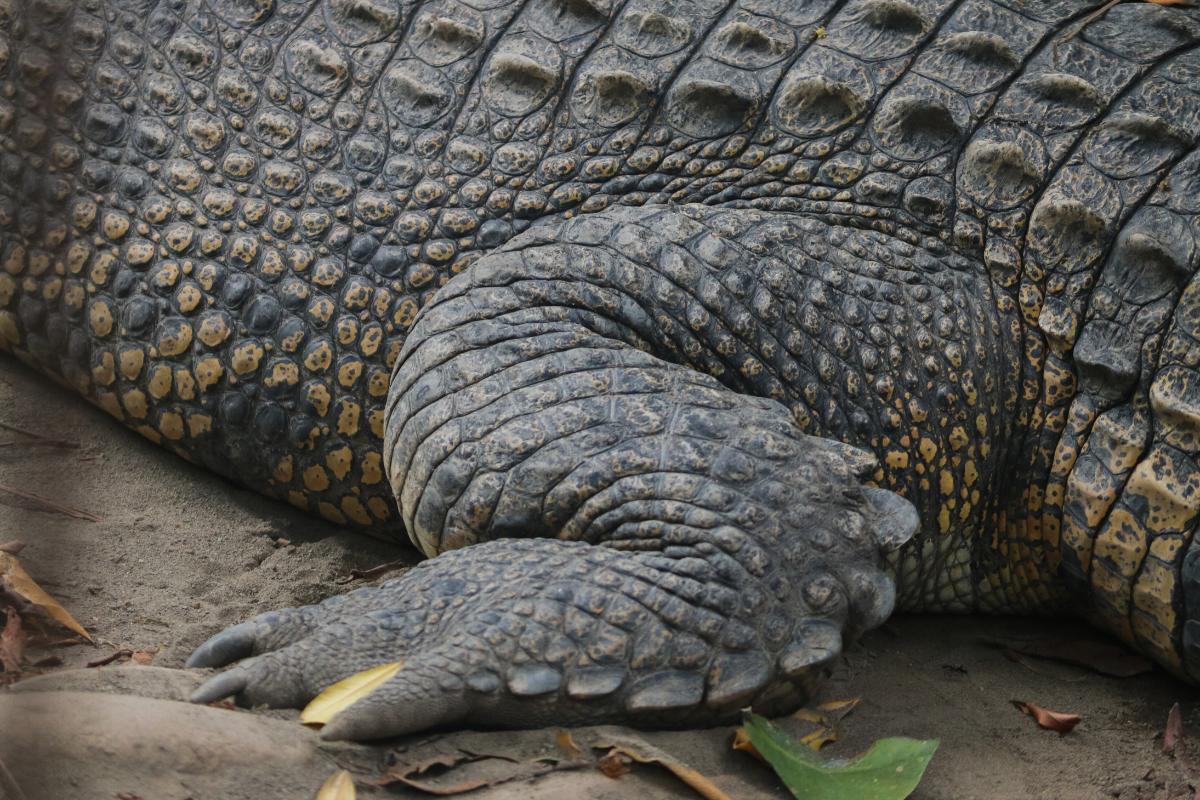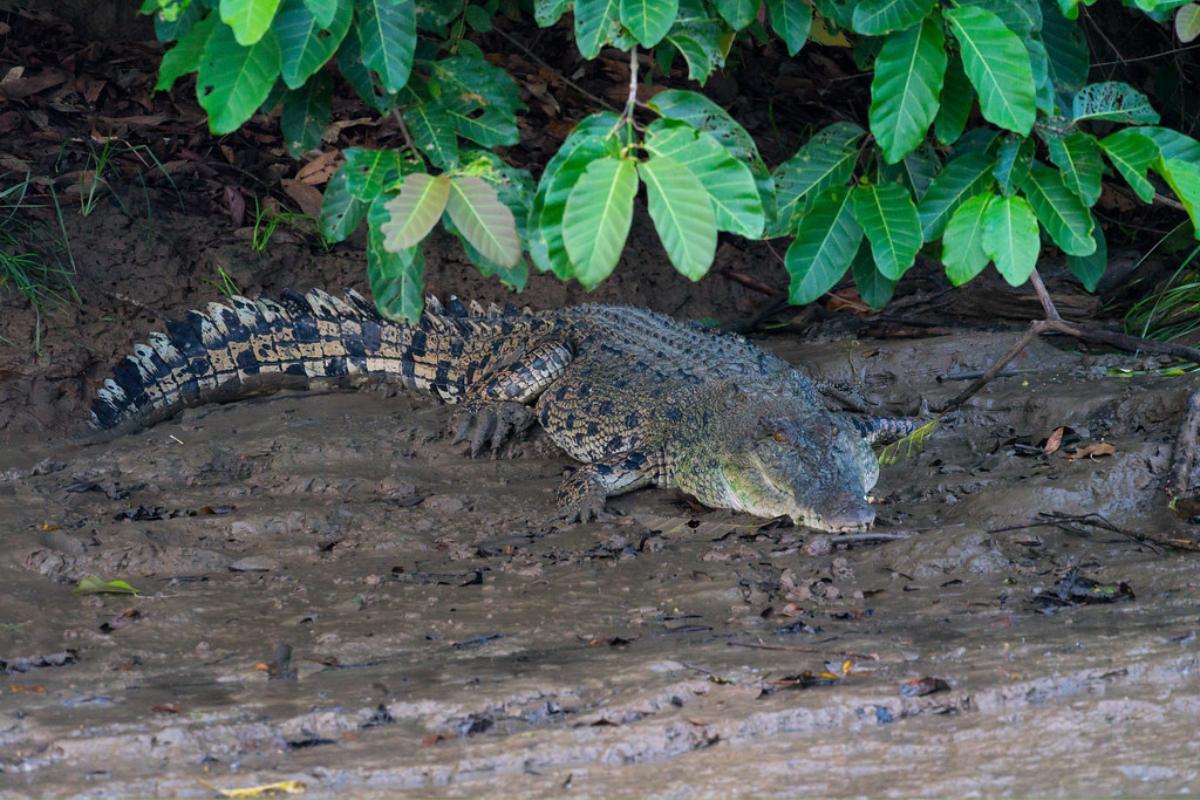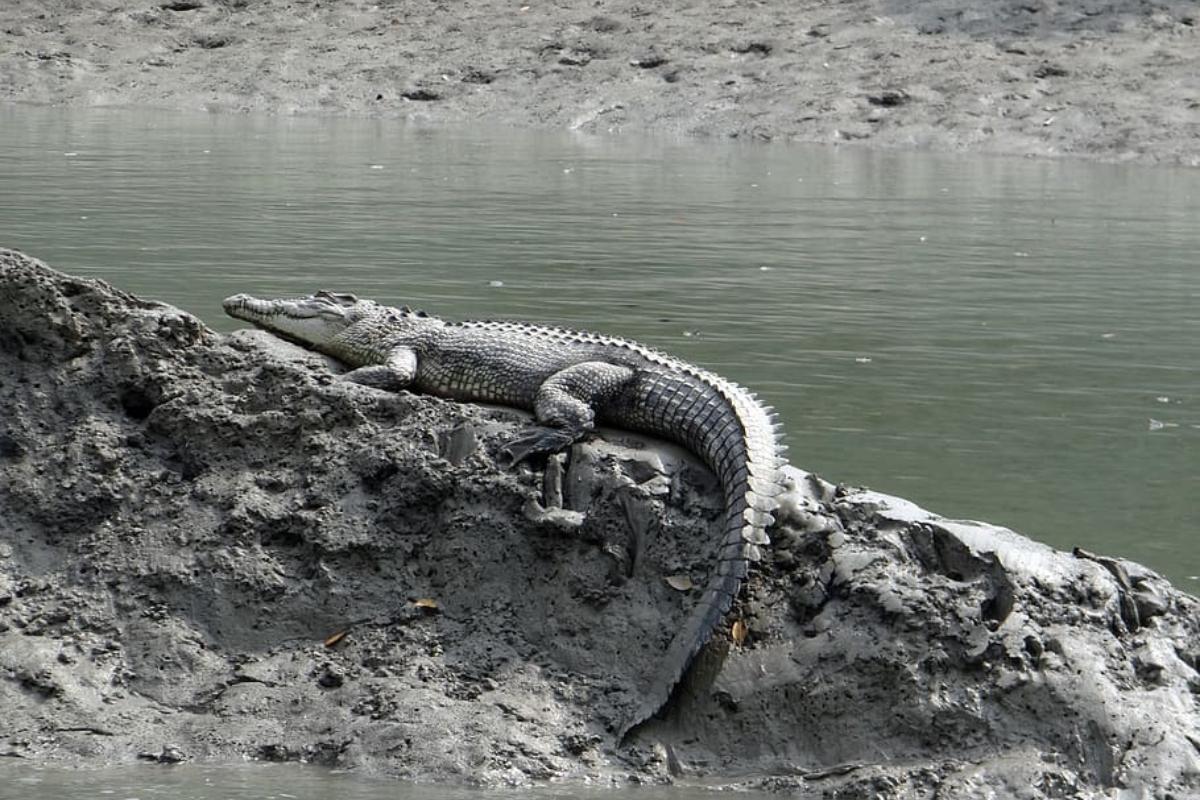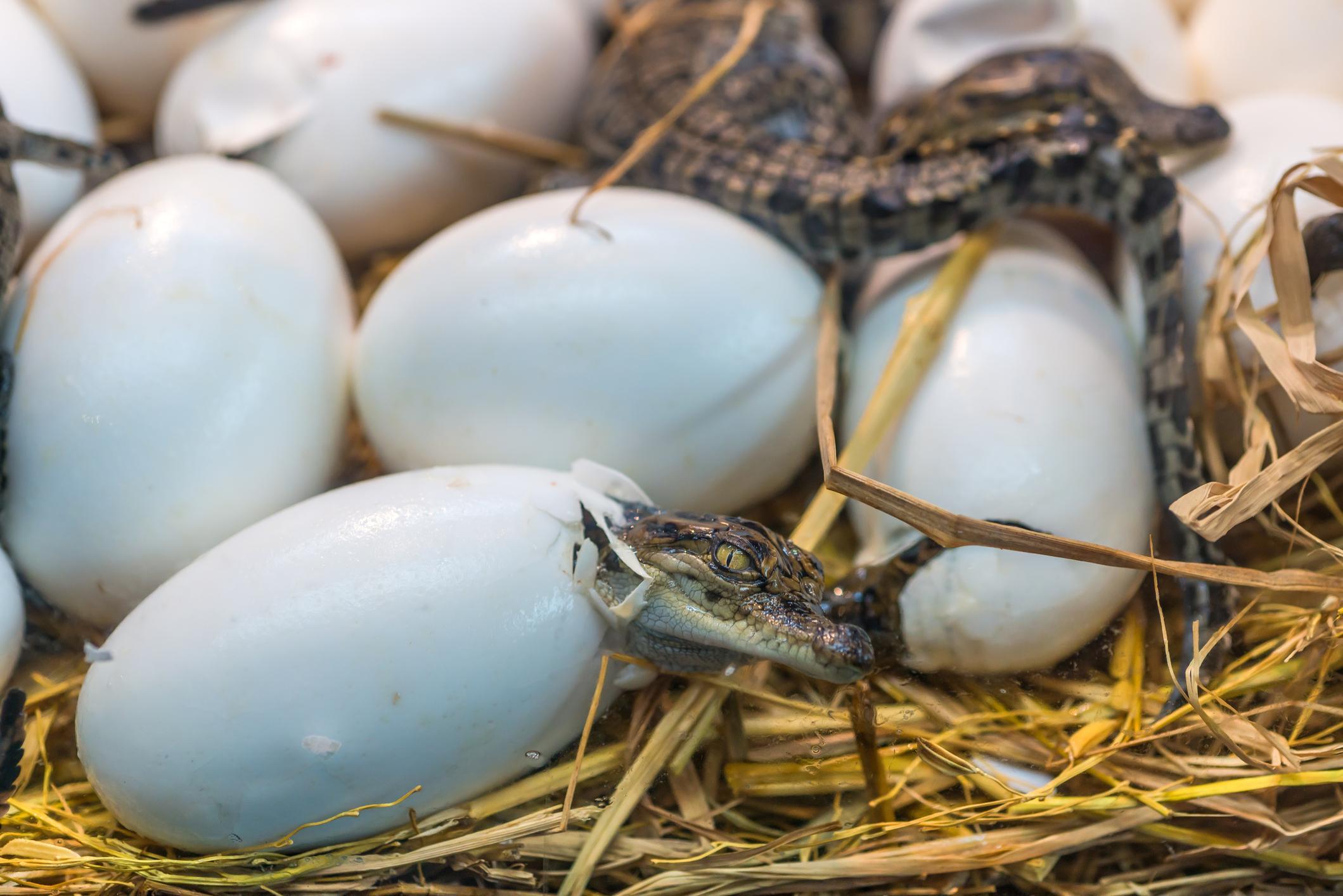Why the Saltwater Crocodile is the Ultimate Apex Predator


The saltwater crocodile, often called the "saltie," is the ultimate apex predator. With a legacy stretching back over 200 million years, it has honed its hunting techniques to perfection, ruling freshwater and coastal waters across Southeast Asia, Australia, and beyond. Standing at the top of its food chain, the saltwater crocodile's powerful jaws, camouflaged appearance, and ambush hunting style make it nearly unbeatable. Unlike other predators, salties are versatile hunters, capable of taking down animals far larger than themselves.
This article from thedailyECO delves into why saltwater crocodiles are considered top apex predators, covering their habitat, unique features, reproductive strategies, and more.
What are the features of a saltwater crocodile?
The saltwater crocodile (Crocodylus porosus) is the largest living reptile on Earth. This ancient predator has physical traits that make it a top predator in its environment.
- Adult males can grow over 6 meters (20 feet) long and weigh more than a ton (2,200 pounds).
- With up to 66 teeth, their jaws can produce the strongest bite force of any living animal. This power lets them crush bones and handle large prey easily.
- Saltwater crocodiles have specialized glands in their tongues that excrete excess salt. This helps them maintain a balance of salts in their bodies, allowing them to live in high-salinity environments without becoming dehydrated.
- Their olive-green or brown color helps them blend into their aquatic and terrestrial environments.
- Saltwater crocodiles have keen vision, hearing, and smell. They can sense vibrations in water and air, which helps them find prey and avoid danger.
- Saltwater crocodiles can live for several decades, with some individuals reaching over 70 years of age in the wild.
- They are known for their intelligent hunting strategies. Saltwater crocodiles can use tools, such as sticks, to lure birds within striking distance. This clever behavior showcases their adaptability.
- These crocodiles are powerful swimmers, capable of reaching speeds of up to 32 kilometers per hour (20 miles per hour) in short bursts. Their strong tails propel them efficiently through water.
- Female saltwater crocodiles exhibit protective behavior towards their young. They build nests and guard the hatchlings from potential predators.
If you’re fascinated by saltwater crocodiles, wait until you see how they compare to their ancient cousin, the alligator! Learn all about it here

How are saltwater crocodiles different from other crocodiles?
Saltwater crocodiles are different from other crocodiles in several key ways. First, they are the largest of all crocodile species and the largest reptiles on the planet. Males can grow up to 23 feet long and weigh over 2,200 pounds, while other crocodile species rarely exceed 18 feet.
Perhaps the most distinguish features of saltwater crocodiles is the fact that they can tolerate a wide range of salinity levels, thriving in both freshwater and saltwater environments, which most other crocodiles do not. This ability lets them access diverse ecosystems, from rivers and marshes to coastal regions, estuaries, and even the open ocean. Unlike most crocodiles, which are limited to freshwater, saltwater crocodiles can exploit coastal and mangrove resources unavailable to freshwater species.
This adaptation also broadens their hunting opportunities, allowing them to prey on fish, birds, and mammals across different environments. Their specialized salt glands help them expel excess salt, which makes survival in marine areas possible. By tolerating brackish and saline waters, they can nest in areas with less competition, giving them a reproductive advantage.
Their behavior is more aggressive and territorial than that of other crocodile species. Saltwater crocodiles defend their territory fiercely and may attack large animals, including humans, who enter it. Unlike some species that may share space, saltwater crocodiles prefer isolation and avoid areas where other crocodiles gather.
Saltwater crocodiles hunt differently, too. They rely on ambush tactics, lying motionless in the water before striking with fast, powerful attacks.
Physically, saltwater crocodiles have broader heads and thicker scales, which give them added power and durability, especially in harsher coastal waters. Their heads are built for strong, quick movements, allowing them to launch sudden, effective attacks in water or on land.
What can eat a saltwater crocodile?
As apex predators, adult saltwater crocodiles do not have natural predators. However, their young and smaller individuals are vulnerable to various threats. These include large fish species like tiger sharks and bull sharks, as well as large predatory birds such as eagles, especially in certain regions.
The primary threat to saltwater crocodiles, especially larger individuals, is humans. Overhunting for their skin and meat has significantly reduced their populations in many areas.
Wondering what threatens the survival of certain crocodile species? Find out more about the urgent conservation challenges facing these reptiles.

Where do saltwater crocodiles live?
Saltwater crocodiles are found throughout the Indo-Pacific region, thriving in a variety of habitats such as coastal areas, estuaries, mangrove swamps, and freshwater rivers. Specifically:
- Australia: Northern Territory and Western Australia
- Southeast Asia: Indonesia, Papua New Guinea, the Philippines, and Malaysia
- South Asia: India, Sri Lanka, and Bangladesh
As previously noted, saltwater crocodiles exhibit tolerance for varying salinity levels, thriving in both freshwater and saltwater environments. This adaptability allows them to inhabit a unique range, encompassing parts of Southeast Asia, Northern Australia, and certain regions of India. Their diverse habitat preferences reflect their flexible lifestyle.
Which country has the most saltwater crocodiles?
Australia has the largest population of saltwater crocodiles, with an estimated 200,000 individuals.
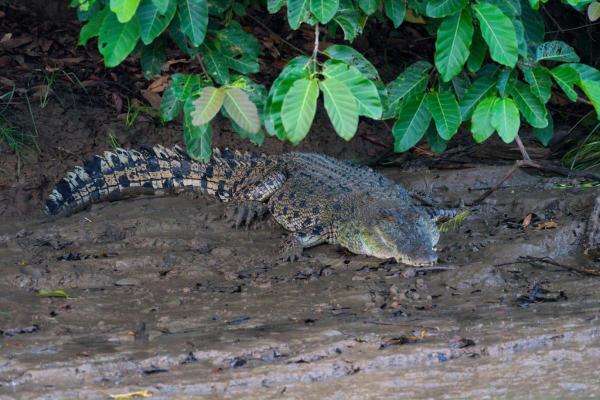
Saltwater crocodile feeding habits and prey
Saltwater crocodiles have a very diverse diet. They are opportunistic hunters, meaning they will eat whatever is available. Their diet can vary based on the season and the availability of prey and includes:
- Fish: a staple food source, especially for smaller crocodiles.
- Crustaceans: crabs and other crustaceans are common prey items.
- Reptiles: they eat turtles, snakes, and even other crocodiles.
- Birds: waterbirds, such as herons and egrets, are frequently targeted.
- Mammals: they can take down wild pigs, deer, and even large mammals like water buffalo.
Larger crocodiles are even capable of attacking humans.
If you’re fascinated by saltwater crocodiles, wait until you see how they compare to their ancient cousin, the alligator. Learn all about it in this other article.
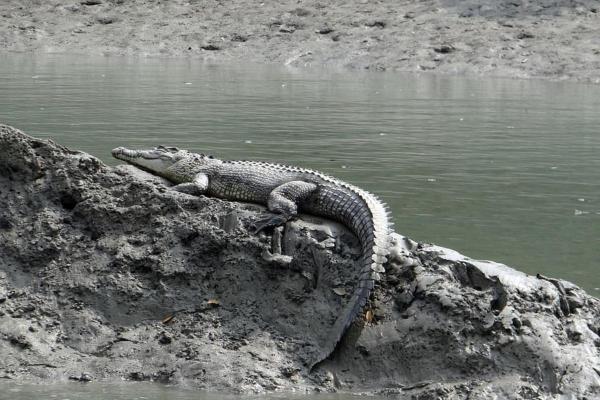
How do saltwater crocodiles hunt?
Saltwater crocodiles hunt with a combination of stealth and force, using techniques that make them highly effective predators.
For ambush hunting, they lie in wait, partially submerged in water, with only their eyes and nostrils visible. They blend in with their surroundings thanks to their camouflaged skin, positioning themselves near riverbanks or waterholes.
Their vision and hearing are sharp, helping them detect prey from a distance. When an animal nears the water’s edge, they launch a sudden, forceful attack. Once they grip their prey, they often use a “death roll,” spinning quickly in the water to tear into their catch with powerful jaws. Their bite force ranks among the strongest in the animal kingdom, capable of crushing bones easily.
They also actively pursue smaller prey in areas with plentiful food. Their strong tails give them powerful propulsion in the water, and they can move quickly on land as well.
While they hunt throughout the day, saltwater crocodiles often become more active at night, sometimes venturing onto land in search of prey. Opportunistic by nature, they don’t just hunt live prey—they also scavenge on carcasses or steal kills from other predators.
Did you know there are creatures with bites even more powerful than that of the saltwater crocodile? Explore the surprising contenders in our related article.
What are the reproductive strategies of saltwater crocodiles?
Reproduction in saltwater crocodiles involves internal fertilization. Saltwater crocodile breeding season spans November to May, peaking in January and February. During this time, males become territorial and aggressive, driving off rivals to establish control over a breeding area.
Larger male saltwater crocodiles are usually the most successful at claiming and defending territory, which boosts their chances of mating with multiple females. With lifespans reaching up to 70 years, these crocodiles mature slowly; females reach sexual maturity at around 10 to 12 years, while males mature closer to 16 years.
During courtship, males use several techniques to attract potential mates. They often produce loud bellows to signal their presence and draw in females. Males may also engage in dramatic displays, like jaw-clapping and body posturing, to assert dominance. Once a female shows interest, the interaction turns gentler, and they may rub their snouts together as a form of bonding.
The actual mating occurs underwater. The male and female intertwine their bodies, aligning their cloacas for internal fertilization.
Each female lays between 40 and 60 eggs in a nest she builds from mud and plant debris. She then covers the eggs with this same material, which insulates and helps protect them. The decomposing vegetation generates heat, helping with incubation, which lasts roughly 90 days. These nests are designed to resist flooding, and the female guards her nest vigilantly against potential predators.
The temperature within the nest during incubation determines the sex of the hatchlings. At around 31°C, the embryos develop as males, while lower or higher temperatures result in females.
As the hatchlings begin to emerge, they make sounds that attract their mother, who then assists them out of the nest. Since the nests are built some distance from the water, the female carefully carries the hatchlings in her mouth to a nearby water source, where they are safer.
While the mother crocodile provides initial care, the hatchlings are largely independent from birth. They must quickly learn to fend for themselves and avoid predators. She remains close to protect them for several months. It's important to note that saltwater crocodiles are highly protective of their young and will aggressively defend them from any threats.

If you want to read similar articles to Why the Saltwater Crocodile is the Ultimate Apex Predator, we recommend you visit our Wild animals category.
1. Estuarine Crocodile. Australian Museum. Available at: https://australian.museum/learn/animals/reptiles/estuarine-crocodile/
- Wayman, E. 2002. "Crocodylus porosus" (On-line), Animal Diversity Web. Accessed April 04, 2022 at https://animaldiversity.org/accounts/Crocodylus_porosus/
- Crocodylus porosus — Salt-water Crocodile, Estuarine Crocodile .Species Profile and Threats Database. Australian Government. Department of Agriculture, Water and Environment. Viewed at: http://www.environment.gov.au/cgi-bin/sprat/public/publicspecies.pl?taxon_id=1774





